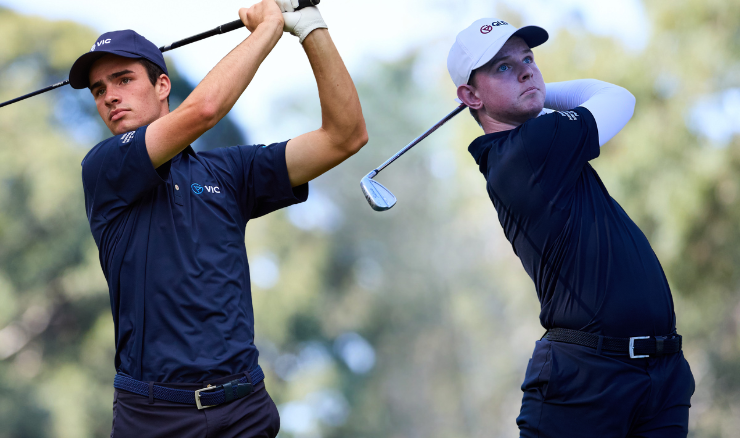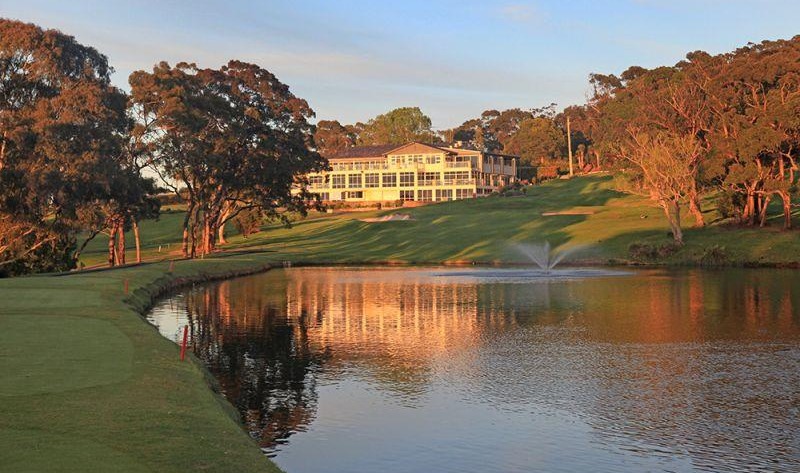12 Jun 2022 | Professional golf |
Tracing the spirit of Francis Ouimet
by Contributor

By Richard Allen
It is a simple black-and-white photo that is embedded in the American sporting consciousness as firmly as images of Babe Ruth slugging balls over the infield at Yankee Stadium or Jesse Owens bursting out of the blocks at the 1936 Berlin Olympics.
The photograph is of 20-year-old amateur golfer Francis Ouimet walking down the fairway at The Country Club in Brookline, Massachusetts, during the 1913 US Open, when he went head-to-head against famous British golfers Harry Vardon and Ted Ray.
In the photograph Ouimet – who was born to a humble family across the road from The Country Club and spent many years caddying for members – has a calmness about him. His tie is slightly askew but his stride is purposeful and his gaze firm and focussed. He holds a fairway wood lightly in his right hand.
Alongside Ouimet is his 10-year-old caddy, Eddie Lowery, playing truant from school for the umpteenth time that month. Lowery looks at the ground, his oversized shirt and Ouimet’s outsize golf bag making him look even smaller than his obvious diminutive stature.
Any serious golfer will know the result of that US Open; Ouimet, Ray and Vardon tied after 72 holes in tumbling rain, and Ouimet won the 18-hole playoff the following day. After he holed the winning putt, the euphoric crowd lifted Ouimet skyward and someone handed him a horseshoe from the neighbouring racetrack. A monumental grin split his face. The hat was passed around for Lowery, yielding $100 – more money than he had ever seen. Ray and Vardon offered their congratulations.
Golf writer Bernard Darwin said in The Times: ‘After sober reflections I state my conviction that if I lived the length of a dozen lives, I should never again be the spectator of such an amazing, thrilling and magnificent finish to an Open championship.’
Ouimet was only the second American to win his country’s national open after John McDermott had triumphed in 1911 and 1912 (McDermott came eighth in 1913). The previous 16 US Opens had all been won by Scots or Englishmen. After Ouimet’s victory golf took off in the USA – player numbers tripled in the subsequent ten years – and that country is now the strongest golfing nation on earth.
The US Open returns to The Country Club in Boston, in America’s conservative north-east, in a fortnight (16-19 June) for only the third time since Ouimet’s heroics. Julius Boros won there in 1963 and Curtis Strange won in 1988, both in playoffs.
The Country Club is one of the original five US clubs – alongside Newport Country Club, Chicago Golf Club, Shinnecock Hills Golf Club and the St Andrews Golf Club – which got together in 1894 to create the United States Golf Association (USGA).
Apart from US Opens, The Country Club has hosted six US men’s amateur championships, three US women’s amateur championships and the infamous 1999 Ryder Cup, where the USA triumphed over Europe in a bitterly-fought contest. Feelings exploded after American players stormed the 17th green to celebrate a 15-metre putt by the USA’s Justin Leonard on the final day. Europe’s Jose María Olazabal stood in silence for the green to clear to match Leonard’s putt, which he failed to do.
At the US Open players will be confronted by a course set up to fiercely protect its par of 71. The course will be more than 6,700 metres long, the fairways will be pinched in at driver distance, the rough will be penal and the greens will be hard and fast.
‘There’s really not much to do. We’re just mowing the greens and letting the rough grow. When it gets so that only a couple of guys on our staff can break eighty it will be ready’. So said Steve McLennan, head pro at Pebble Beach, when asked about preparations for the 1982 US Open.
The USGA, which runs the US Open, will not resile from this parsimonious approach to the event. In 1974 Sandy Tatum, who ran the tournament committee, answered complaints about Winged Foot’s difficult set-up with: ‘We’re not trying to embarrass the best players in the world. We’re trying to identify them.’
For all Australia’s ability to punch above its weight in world golf, only two Australians have ever triumphed in the US Open: David Graham in 1981 at Merion in Philadelphia, and Geoff Ogilvy in 2006 at Winged Foot in New York, when both Phil Mickelson and Colin Montgomerie recorded double-bogeys on the final hole. By contrast Ogilvy kept his cool, making a sublime up-and-down from the front of the green to win by a shot.
The list of Australian runners-up in the event is substantial: Kel Nagle in 1965, Bruce Crampton in 1972, Greg Norman in 1984 and 1995, Stephen Leaney in 2003 and Jason Day in 2011 and 2013.
An American is likely to triumph at The Country Club. Not only do Americans occupy nine of the top 14 spots in the world rankings (including US Masters winner Scottie Scheffler at number one), but they have won six of the last seven US Opens, a run ended by Spain’s Jon Rahm at Torrey Pines last year.
Australia will be represented by Cam Smith, Marc Leishman, Min Woo Lee, Adam Scott, Lucas Herbert, Todd Sinnott and Jed Morgan. Our highest-ranked player, Smith, is currently at number three in the world – he has improved from 21 at the end of 2021 – but he knows that golf rankings count for nothing if you can’t win one of golf’s four major championships.
Aside from the world’s best players, the field will include a few fortunate club professionals who successfully navigated pre-qualifying, journeymen pros who will be happy to make the cut, a bunch of smart young pros hoping to make the big time, and plenty of great players trying to rediscover their mojos.
Included in the latter are Jordan Spieth, Brooks Koepka and Rory McIlroy – all former US Open winners, all former world number ones, and all struggling to find the magic of old. Spieth, champion at Chambers Bay in 2015, currently sits at nine in the world. Koepka, champion at Erin Hills in 2017 and Shinnecock Hills in 2018, is currently 20th; and McIlroy, who won by an eye-watering eight shots at Congressional in 2011, is currently 8th in the world.
Their stories are varied, but all are living proof that a loss of golf form, like death and taxes, is inevitable. Very few golfers remain at the top of the game for years on end. A drop of form often coincides with a putter losing its magic.
McIlroy has the habit of shooting the lights out in one or two rounds of each major (think his 64 in the final round at Augusta to finish second and his 66 in the opening round at the US PGA last month at Southern Hills before finishing eighth), but has seemingly lost the ability to string four rounds together.
All would love a bit of Francis Ouimet magic at The Country Club.
First published in the Australian Financial Review. Richard Allen is a journalist and author, and a Golf Australia board member.
Join our newsletter
Get weekly updates on news, golf tips and access to partner promotions.
Related News
Aussies on Tour: Smylie comes full circle in Germany
Four years ago, it was to be his professional launch pad yet the BMW International Open is now the next step in the development of Elvis Smylie.
Cameron Smith scholars announced for 2025
Hamish Farquharson and Chase Oberle will spend time with the 2022 Open champion in the United States as part of the 2025 Cameron Smith Scholarship.
Monash Country Club to host Australian Senior Amateur
The Australian Senior Amateur is headed to New South Wales in 2025 with the magnificent facility at Monash Country Club playing the host.


